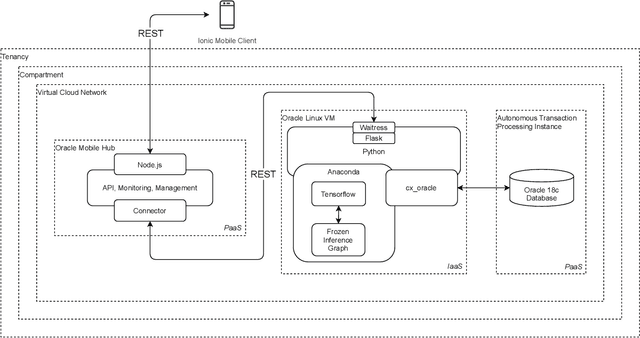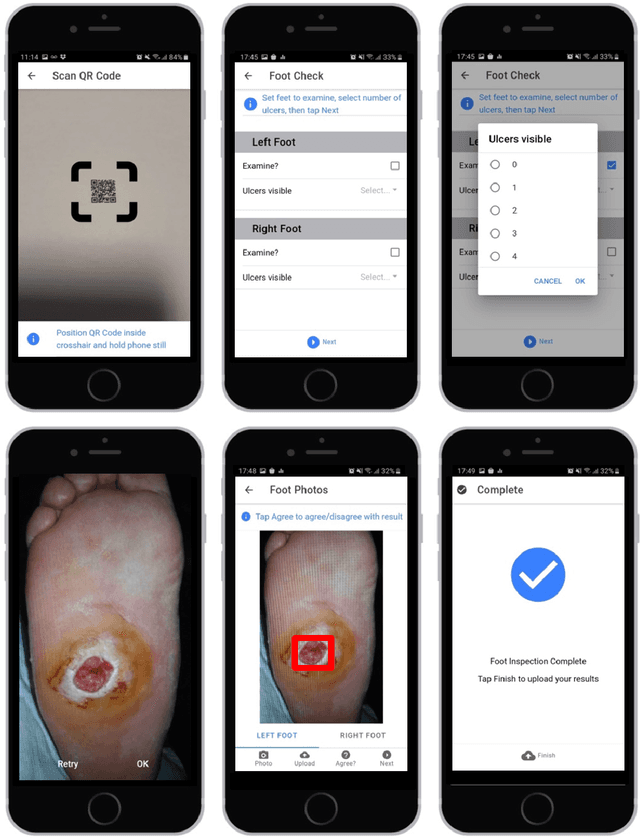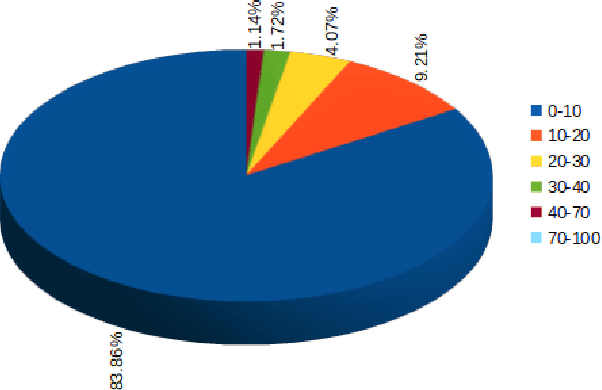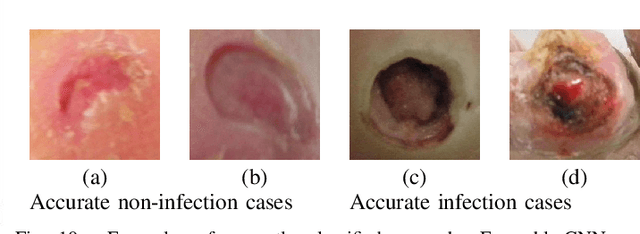Naseer Ahmad
A Cloud-based Deep Learning Framework for Remote Detection of Diabetic Foot Ulcers
May 17, 2021


Abstract:This research proposes a mobile and cloud-based framework for the automatic detection of diabetic foot ulcers and conducts an investigation of its performance. The system uses a cross-platform mobile framework which enables the deployment of mobile apps to multiple platforms using a single TypeScript code base. A deep convolutional neural network was deployed to a cloud-based platform where the mobile app could send photographs of patient's feet for inference to detect the presence of diabetic foot ulcers. The functionality and usability of the system were tested in two clinical settings: Salford Royal NHS Foundation Trust and Lancashire Teaching Hospitals NHS Foundation Trust. The benefits of the system, such as the potential use of the app by patients to identify and monitor their condition are discussed.
Recognition of Ischaemia and Infection in Diabetic Foot Ulcers: Dataset and Techniques
Sep 11, 2019



Abstract:Diabetic Foot Ulcers (DFU) detection using computerized methods is an emerging research area with the evolution of machine learning algorithms. However, existing research focuses on detecting and segmenting the ulcers. According to DFU medical classification systems, i.e. University of Texas Classification and SINBAD Classification, the presence of infection (bacteria in the wound) and ischaemia (inadequate blood supply) has important clinical implication for DFU assessment, which were used to predict the risk of amputation. In this work, we propose a new dataset and novel techniques to identify the presence of infection and ischaemia. We introduce a very comprehensive DFU dataset with ground truth labels of ischaemia and infection cases. For hand-crafted machine learning approach, we propose new feature descriptor, namely Superpixel Color Descriptor. Then, we propose a technique using Ensemble Convolutional Neural Network (CNN) model for ischaemia and infection recognition. The novelty lies in our proposed natural data-augmentation method, which clearly identifies the region of interest on foot images and focuses on finding the salient features existing in this area. Finally, we evaluate the performance of our proposed techniques on binary classification, i.e. ischaemia versus non-ischaemia and infection versus non-infection. Overall, our proposed method performs better in the classification of ischaemia than infection. We found that our proposed Ensemble CNN deep learning algorithms performed better for both classification tasks than hand-crafted machine learning algorithms, with 90% accuracy in ischaemia classification and 73% in infection classification.
 Add to Chrome
Add to Chrome Add to Firefox
Add to Firefox Add to Edge
Add to Edge